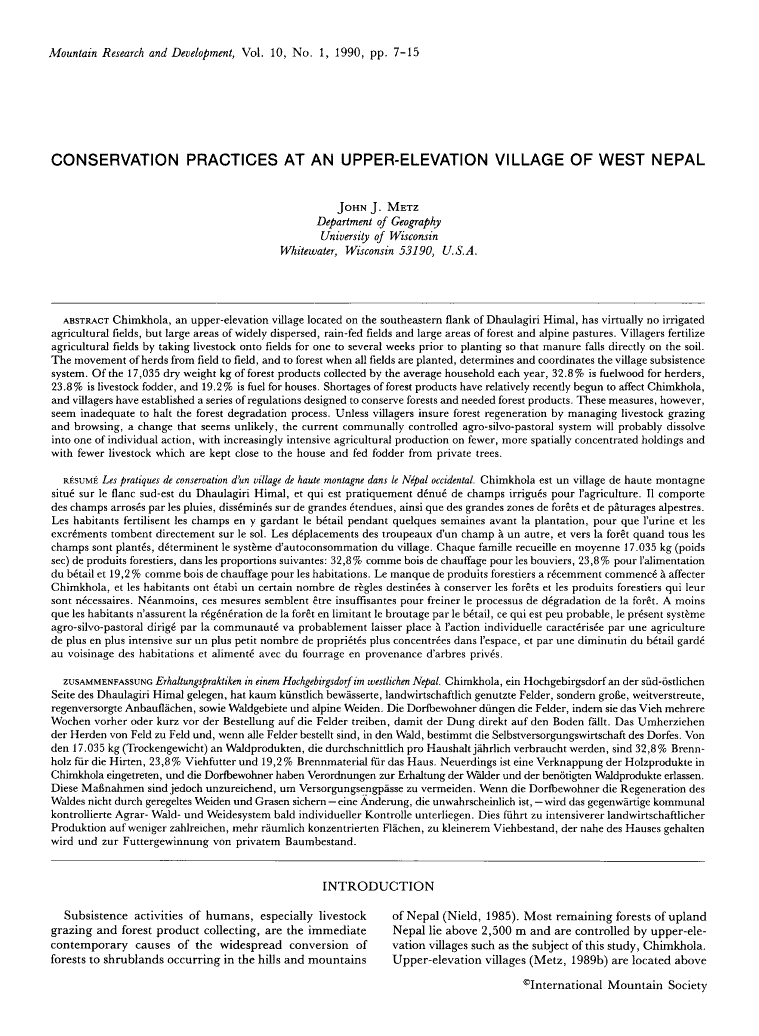
Chimkhola, an upper-elevation village located on the southeastern flank of Dhaulagiri Himal, has virtually no irrigated agricultural fields, but large areas of widely dispersed, rain-fed fields and large areas of forest and alpine pastures. Villagers fertilize agricultural fields by taking livestock onto fields for one to several weeks prior to planting so that manure falls directly on the soil. The movement of herds from field to field, and to forest when all fields are planted, determines and coordinates the village subsistence system. Of the 17,035 dry weight kg of forest products collected by the average household each year, 32.8% is fuelwood for herders, 23.8% is livestock fodder, and 19.2% is fuel for houses. Shortages of forest products have relatively recently begun to affect Chimkhola, and villagers have established a series of regulations designed to conserve forests and needed forest products. These measures, however, seem inadequate to halt the forest degradation process. Unless villagers insure forest regeneration by managing livestock grazing and browsing, a change that seems unlikely, the current communally controlled agro-silvo-pastoral system will probably dissolve into one of individual action, with increasingly intensive agricultural production on fewer, more spatially concentrated holdings and with fewer livestock which are kept close to the house and fed fodder from private trees.